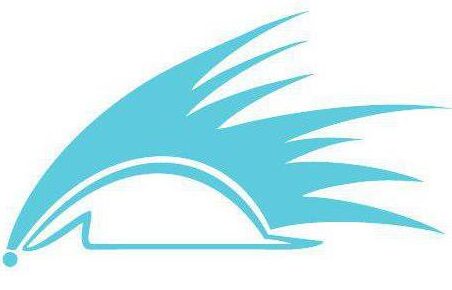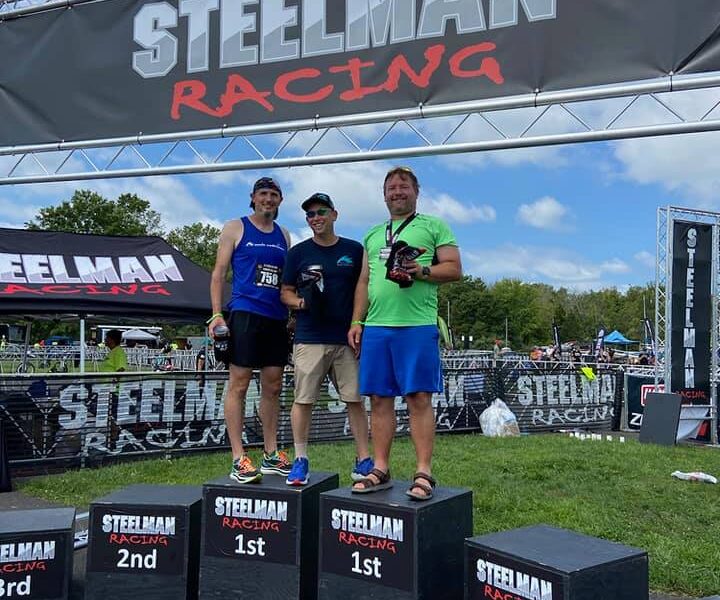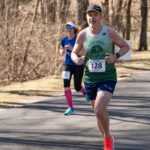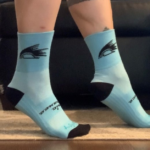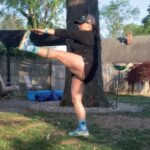Stuart lives in the Philadelphia suburbs with his wife and identical 6 year old twin boys. He has been an outpatient orthopedic Physical Therapist for about 20 years. He has a post graduate certification in MDT (also known as McKenzie). Besides being a physical therapist, he’s a certified strength and conditioning specialist. He ultimately became a physical therapist after being involved in a head on car accident over 20 years ago where he sustained a compound or open patella fracture, crush fracture to his femur, and cartilage damage to his femur. Due to these injuries, he couldn’t walk/weight bear for 10 months. As if he did not sustain enough punishment during his rehab, he decided to become a runner, and more recently a triathlete.
I was first asked to write this post in early Fall but I procrastinated and procrastinated because I was waiting for the shoe to drop. For me, it’s the injury shoe. I literally wanted to get to the end of the year, New Year’s Eve and not sustain an injury. Call it superstitious, call it whatever you want, but there was a time, I did not think I could make it through 6 months without an injury. I’ve basically been injury free for almost 2 years because I listened to my coach.
I returned to training after another bout with posterior tibial tendonitis, which started in March 2019, and kept me from running for almost 1 year. In March 2020, COVID-19 hit and basically eliminated the triathlon season. I continued to train-swim/bike/run/lift-but without much purpose. I was fortunate, along with 200 other athletes, to compete in the Steelman Triathlon in September of 2020. Besides, being fortunate to be able to race, which I was very grateful for, I was also very fortunate because I had a serendipitous meeting with Coach Stacey on the swim dock as I departed on my mile swim. That meeting led me to joining Sonic Endurance and having Stacey as my coach. In fact, it was the first time I had a coach for training for any race.
I always thought coaches were more for elite endurance athletes, not for novices or run of the mill triathletes, like myself. It is a relationship I’m not unfamiliar with, but something I haven’t been used to, especially for endurance sports. For any of my races, be it a 10-miler, half marathon, marathon, Olympic Tri, or 70.3 I’ve done, I just bought or found a training plan online. I did my best and just tried to follow along and do as the plan said. Those plans were good, they got me to the finish line, but in another sense they were bad for me and probably for a lot of us out there. I trained and trained, trying to check off all the boxes of the plan, but most times, I trained without purpose. I didn’t vary speed, I didn’t pay attention to heart rate and another thing, I didn’t pay attention to warning signs for my body. I’m a runner at heart, so I would run extra because that’s what I liked. I wouldn’t necessarily skip my bike or swim sessions, but I didn’t focus on them as much as I should have. Even the runs, I wouldn’t necessarily add any speed or long, slow aerobic work in.
Basically, no one held me accountable, or I didn’t have the guardian angel on my shoulder looking at the signs and symptoms for a possible upcoming injury from the data from the workout or from my verbal feedback from the workout.
When I first started with Stacey, I really wouldn’t provide a lot of feedback about my workouts. But, after some prompting, I learned how valuable that feedback was for my coach and myself. At the beginning, there were times where I would question why I wasn’t running more or not see the purpose in the work. I was worried since I wasn’t always running fast, I’d lose my speed. (That wasn’t the case. In fact, the first race of the year was a sprint tri, which I PRed thanks in part to a blistering 5k finish).
What I failed to recognize and the things I learned after discussions with Stacey, more was not always better and fast wasn’t always necessary. There was a purpose for the build up and work out plan and that purpose allowed me to stay injury free. Having and listening to a coach and listening to my body, allowed me to achieve the ultimate, finishing IRONMAN Maryland and finishing in my goal time.
For the past decade, it seems that every other season gets lost due to an injury-herniated disc in my back, ankle sprain and avulsion fractures in my foot, posterior tibial tendonitis, etc. In my delusional, non-clinical mind, I think there’s 2 subsets of triathletes: the ones that never seem to get injured and the ones that are always dealing with some sort of overuse injury. For me, I am in the latter group. In my clinical mind, I know the data indicates 87% of all triathletes will experience an overuse injury in the 6 months leading up to a triathlon. We train a lot; and I mean a lot. So, we are bound to get injured. It happens. But, to what level is determined by us, as athletes. If you are feeling something is off or your body is not right or isn’t responding, that is a warning sign. That ache you feel while you are running or cycling or swimming that doesn’t seem to go away or takes longer to go away, that is a warning sign. The feeling of heavy legs or night pain could be signs as well. First, stop what you are doing. Do not seek out opinions from your neighbors or Dr. Google; surefire ways to make things linger or get worse. Let your coach know. Then seek out professional help, an orthopedist, a PT, and/or a chiropractor. Trust these professionals, it’s their job to help. It’s always good to have someone that you trust and someone that knows you and your passion for endurance sports. These professionals will get you back on track so you can set PRs and just enjoy your sport!
